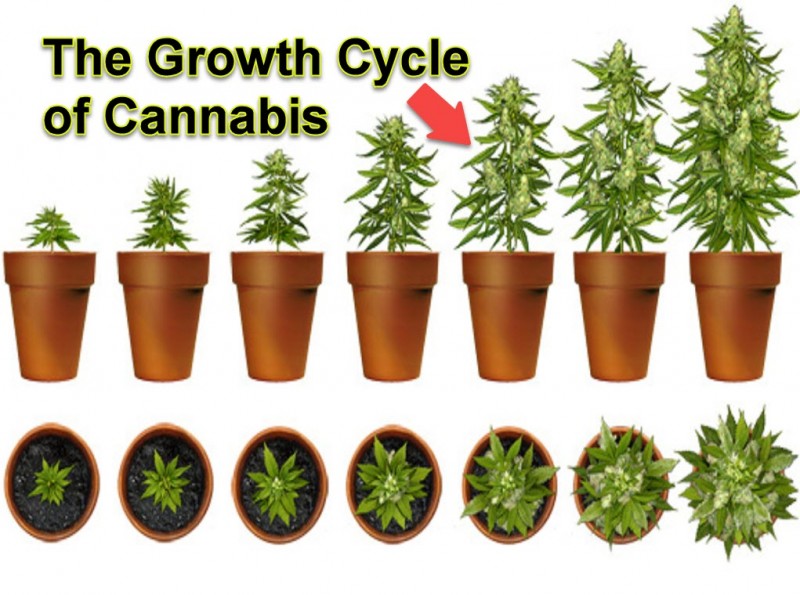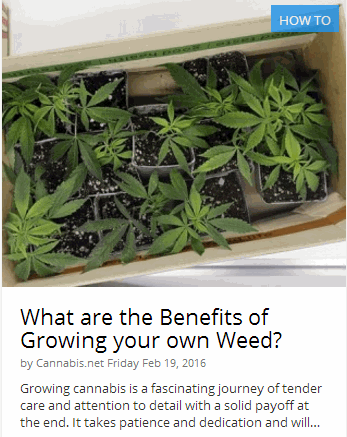The Growth Cycle of Cannabis
Growing your own cannabis medicine at home is rewarding, but it can get become confusing for beginners. There are many things that you have to be on top of, such as the environment, temperature, humidity, water, and so much more. But understanding the plant’s growth cycle can will help you know what to expect and it will also equip you with the knowledge to fix problems since you already know how the plant’s behavior should be at a certain stage.
No matter how much you’ve studied cannabis plants, sometimes you might encounter problems that will be difficult to fix. Just like with other kinds of plants, sometimes it refuses to grow, and you’ll have to start from scratch once again. Each growth stage of the plant has its own unique challenges. Being aware of what these are will prepare you for what may come along.
Seeds
Cannabis seeds are created through sexual reproduction. Each cannabis seed has two parents containing genes from both a female and a male plant. Sometimes a hermaphrodite plant can produce a seed, although this is a much more complicated process and home growers don’t really need to think about it all that much. Cannabis seeds have a waxy coat, and beneath it is a tiny plant lies dormant that is ready to grow once exposed to water and heat. If it doesn’t have water and heat, it ends up growing old and will eventually die – this is the reason why seeds can’t be kept forever.
Germinating Seeds
Germinating is the process of exposing your cannabis seeds to light and water as the first step to growing the plant. Giving them light and water will activate the hormones inside the seed to start sprouting and begin the growth process. Once a seed germinates, a root forms downward then splits the shell’s outer shell open, growing downward in the soil to find nutrients and water. Around the same time a green stalk goes upward, then the first two cotyledon leaves will appear.
When the cannabis plant sprouts, it has two meristems: the one located at the crown is called the shoot meristem, while the other at the root is called the root meristem. The shoot meristem is what becomes the cannabis plant’s stem and foliage, while the root meristem becomes the taproot. The meristem is where cell division happens, which sets the groundwork for growth. The multiplying stems are found all around the plant but are mostly concentrated in its crown and roots, where most of the growth happens.
Seedling Stage
As the cannabis plant turns into a seedling, you’ll notice that it will grow more of the traditional cannabis leaves. When it’s a sprout, the seed will first produce leaves that feature one ridge, but with new growth will come more fingers in odd-numbered sequences: 1, 3, 5, 7, etc. Mature cannabis plants have around 5 to 7 fingers in each leaf although it’s also common for some plants to develop more.
Cannabis plants can stay in the seedling phrase for a long time, sometimes lasting until 6 weeks. The duration it stays in the seedling phase depends largely on the environmental factors its exposed to, as well as the strain you are growing.
During the seedling stage, these are the most important factors to be aware of:
- Heat: 77 degrees
- White light: 18 hours per day
- Humidity: around 60%
Vegetative Stage
The vegetative stage is when the cannabis plants start to resemble a mature cannabis plant in all its glory. This is also when you’ll start to see the big, ridged leaves and much more foliage since the cannabis plant is now ready to absorb more carbon dioxide and other nutrients.
The roots will continue to grow beneath the soil, while the plant grows taller. In some cases a healthy cannabis plant can even grow as much as 2 inches in a day. How long the vegetative phase lasts will depend on light exposure; if you have outdoor grows it would depend on the climate of your location but for indoor grows you can control how long you’d like the plant to stay in a vegetative phase. The average time for cannabis plants to stay in vegetative phase is 1-2 months.
Flowering Stage
The flowering stage is the final stage of growth, one that growers look forward to the most. The flowering stage is extremely important. Cannabis plants will flower after you have reduced the light exposure, and it becomes sexually mature to reproduce. Female plants take longer to mature, sometimes a few weeks more than male plants.
Once your cannabis plant is in the flowering stage, you’ll begin to notice that sticky resin grows in large quantities right outside the leaves. The resin is concentrated on the plant’s reproductive parts, also known as the buds. The resin is where the most THC is found on the entire plant. Factors affecting the potency of your plant include how long it spent in the flowering stage, and if the plant has been fertilized or pollinated.
When the light cycle has been changed, cannabis grows much faster. This is also when the internodes, or the distance on the stem between each node, becomes shorter.
These are the factors to be aware of during the flowering stage:
- Heat: 68-77 degrees
- Light: 12 hours (orange-red lighting)
- Dampness: 50-70%
When the buds finally reach maturation, it’s time to harvest.
OTHER STORIES YOU MAY ENJOY...
GROW YOUR OWN CANNABIS BENEFITS, CLICK HERE.








